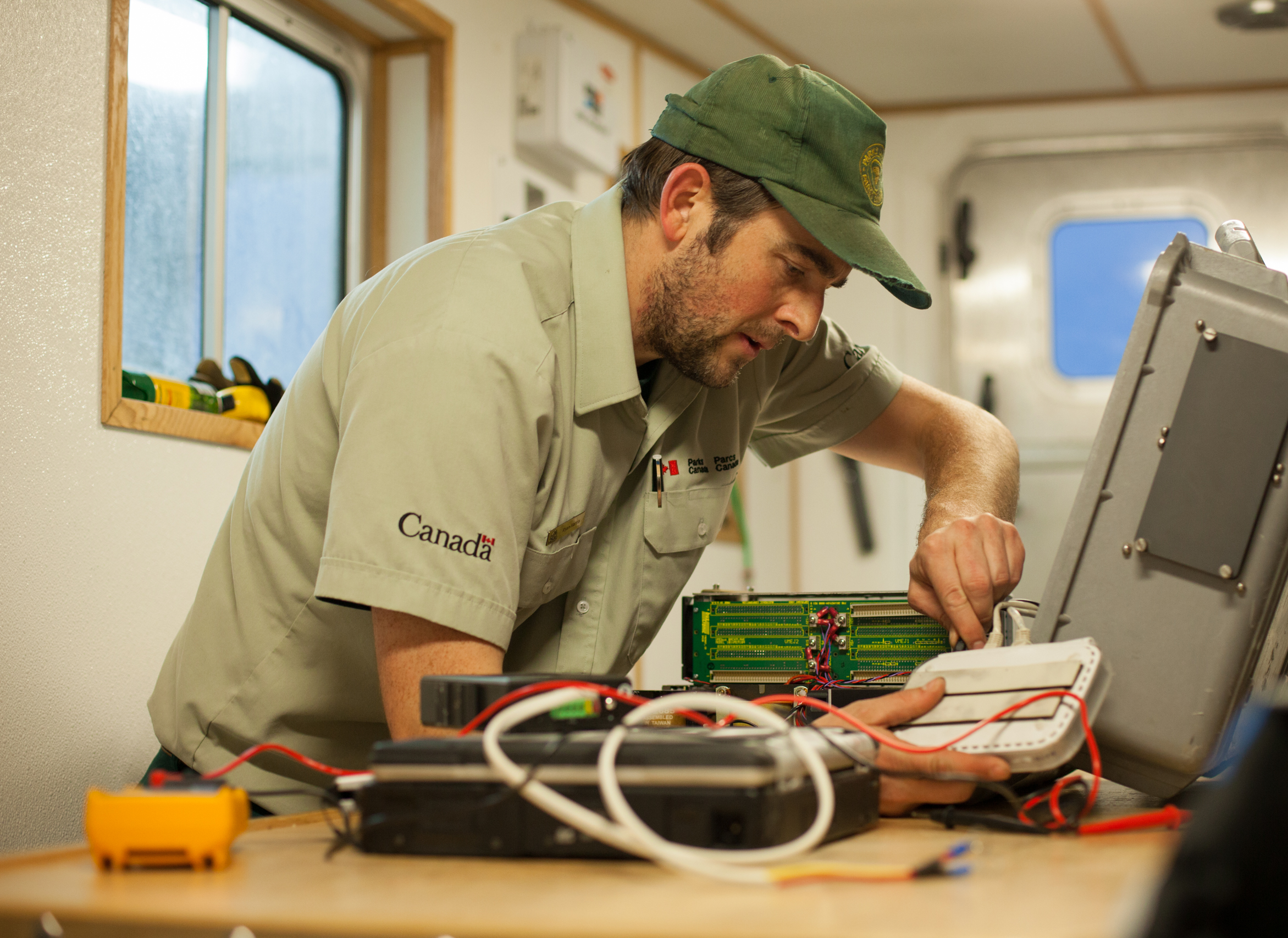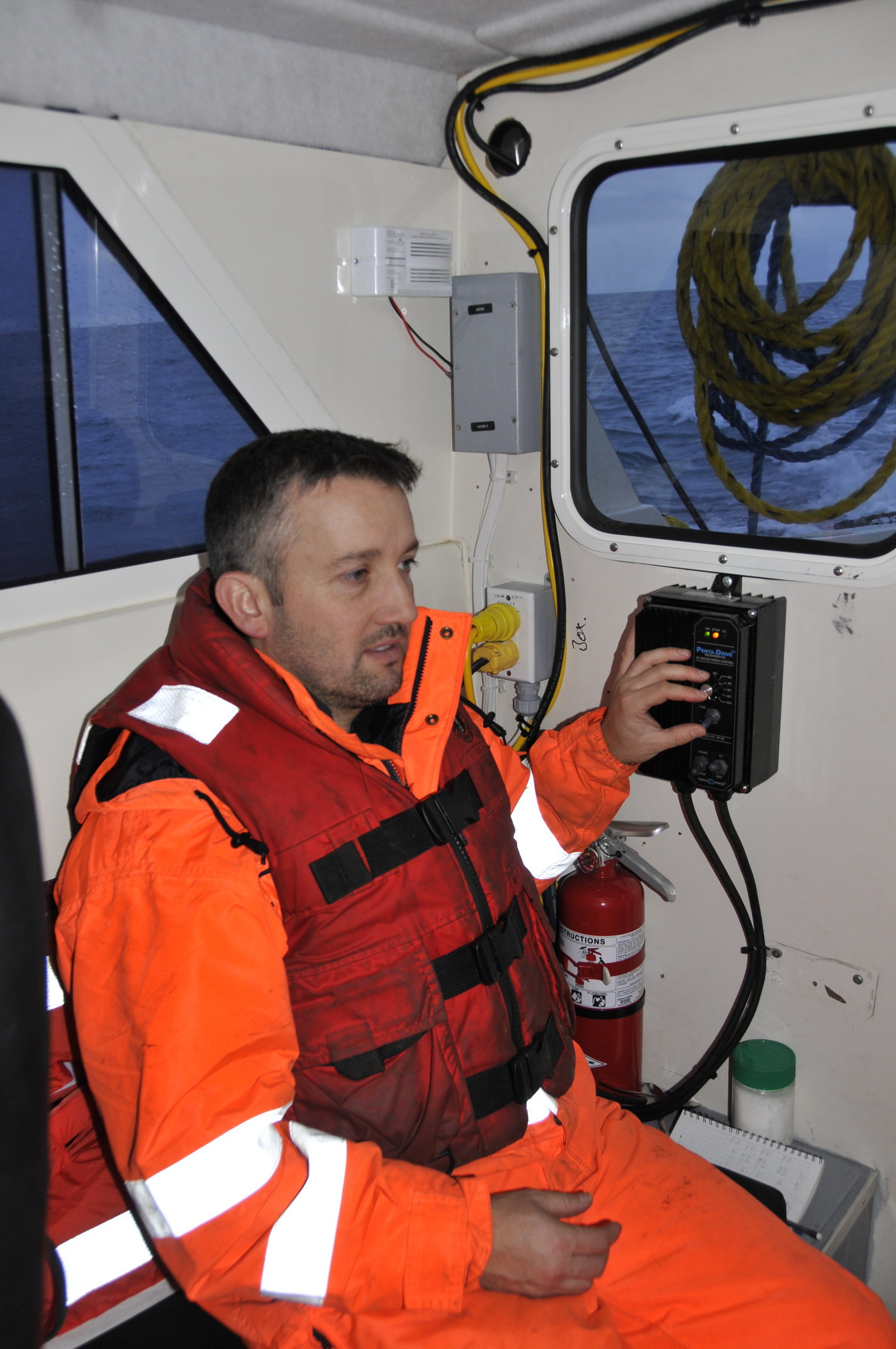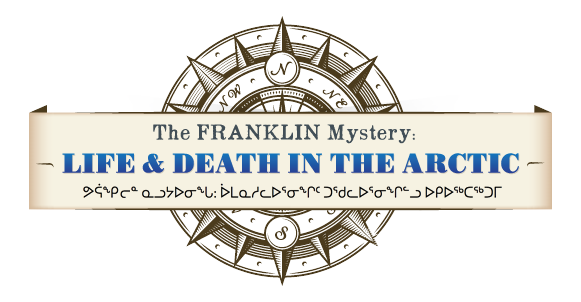Interview with Ryan Harris and Jonathan Moore
 Ryan Harris
Ryan Harris
 Jonathan Moore
Jonathan Moore
Ryan Harris and Jonathan Moore are underwater archaeologists with Parks Canada who have led a series of notable interdisciplinary expeditions in search of the ships Erebus and Terror since 2008.
Lyle Dick – Interview Ryan Harris and Jonathan Moore of Parks Canada’s underwater archaeology unit
1) When and how did you first hear of the missing expedition of Sir John Franklin?
RH: Well, like many Canadians perhaps, my first acquaintance with Franklin comes from listening to Stan Rogers and the Northwest Passage.
JM: I think I first heard a bit about the expedition actually through the work that took place on Beechey Island with the exhumation of three burials from the Franklin Expedition, work that was conducted by Owen Beattie and his colleagues that sought to look at those human remains. I remember the photographs. I think this was in the early eighties.
2) What happened to Franklin's party?
RH: Well, time will tell. Obviously there are many theories that have been floated as to what caused their ultimate demise. I tend to subscribe to the view that- Franklin and his men - their fates were ultimately sealed the moment they received their orders from the Admiralty in May 5, 1845. And ultimately what those orders dictate is that Franklin and his two ships were to proceed westward through Baffin Bay, Lancaster Sound and into Barrow Strait. And upon gaining Cape Walker, on Russell Island, they were specifically to proceed southward and westward towards the North American mainland to try and make their way as directly as possible to Bering Strait. In receiving that instruction, they were directed to proceed into one of the harshest environments in the world. Ultimately, the route that they decided on, that took them, we believe, through Peel Sound, as John said, where they became trapped in Larsen Sound, and found themselves in a very inhospitable environment where there was very little- very few resources for them to survive on.
3) Why did they fail?
RH: Well, I would say that there has been a significant amount of, say, armchair quarterbacking as to what sort of decisions they made and how sensible they were. There’s generally been the often voiced opinion that they failed because they didn’t adequately embrace Inuit approaches to survival in the Arctic and that’s the criticism that’s often leveled at Royal Navy search parties. But ultimately, as we said, they were tasked with trying to survive in a location where even the Inuit, for a good reason, wouldn’t frequently travel. So that combined with the really difficult circumstances of being trapped in a body of ice that was, you know, drifting southward at an almost glacial pace, so to speak, where they must have lost all hope that that was ever going to change.
4) Where are the ships?
RH: From my perspective, I don’t see any reason to challenge the version of events that come to us from the Inuit reports of the nineteenth century as claimed by McClintock and Hall and Schwatka, that ultimately suggest that the two ships parted company, that one was lost somewhere west of King William Island in deeper water and that the other somehow made it much farther south, ostensibly to the eastern stretches of the Queen Maud Gulf. To my mind, these accounts, they tend to congrue in a sufficient number of details and those details are sufficiently vivid that I think it’d be hard to conclude that there’s not a lot of validity to their experience.
5) How do you know?
RH: What we have attempted to do of course is try to assess where the preponderance of evidence points us. So engaging not just historical information and Inuit testimony, but also looking at environmental factors, working closely with the Canadian Ice Service, and Tom Zagon. We’ve been working with an historical ice climatology study which has provided very useful information that informs us as to where the ice at the time could have, how it would have formed, seasonally how it would have drifted and broken up. This helps us to narrow our search by providing an array of possibilities that would have limited where these ships we think could have ended up.
6) Why do you care?
RH: You’d used the term Franklin fever, Franklin fanaticism. We find the story about Franklin of course very very riveting. But it’s not necessarily the white whale for us, that we’re going to pursue to the ends of the earth. We’re looking for these ships because we think that we can bring the expertise and a survey strategy that stands a reasonable chance of actually locating these ships. Of course, together they were designated as a national historic site in 1992. So we of course have an institutional responsibility within Parks Canada to try to locate these ships and that will allow us to communicate their importance to the public. It goes without saying they’re absolute icons of maritime history globally, not just within the Canadian Arctic.
7) What is the significance of Franklin's last expedition?
RH: Well, it’s myriad of course. The search for a Northwest Passage and then the ensuing searches for Franklin has an enormous geographical legacy, in that this serves to chart thousands and thousands of kilometers of what now forms the Canadian Arctic archipelago. Not surprisingly, so many stories about exploration and the exploration of the Canadian Arctic ultimately come back to Franklin.
JM: I think since others have probably covered that I think- the wrecks are significant wherever they lie because of the archaeological potential they hold to tell us what happened to this expedition. I think from my perspective that’s their significance. There are wider aspects of their significance of course but from my perspective as an archeologist I think it’s their archaeological potential.


